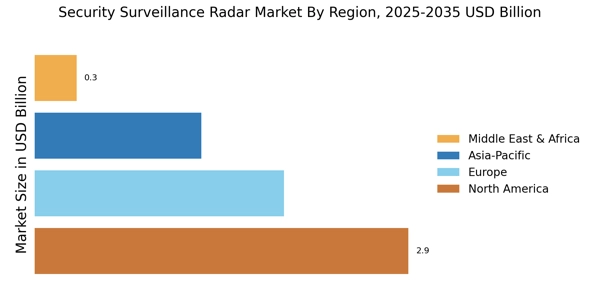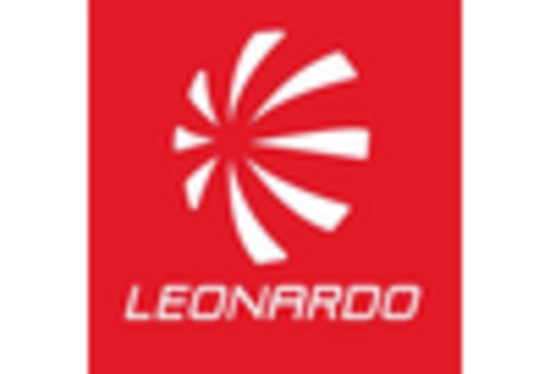Technological Innovations
Technological advancements are significantly shaping the Security Surveillance Radar Market. Innovations such as artificial intelligence, machine learning, and advanced signal processing are enhancing the capabilities of surveillance radars. These technologies enable real-time data analysis, improving threat detection and response times. For instance, the integration of AI algorithms allows for the identification of suspicious activities with greater accuracy, reducing false alarms. The market is expected to benefit from these advancements, with a projected increase in revenue as organizations seek to adopt cutting-edge solutions. Furthermore, the development of compact and cost-effective radar systems is likely to expand the market reach, making advanced surveillance accessible to a broader range of users, including small businesses and residential areas.
Increasing Security Concerns
The rising incidence of crime and terrorism has heightened the demand for advanced security solutions, particularly in the Security Surveillance Radar Market. As urbanization continues to expand, cities are increasingly vulnerable to security threats, prompting governments and organizations to invest in sophisticated surveillance technologies. The market is projected to grow at a compound annual growth rate of approximately 8.5% over the next five years, driven by the need for enhanced safety measures. This trend indicates a shift towards proactive security measures, where surveillance radars play a crucial role in monitoring and deterring potential threats. Consequently, the Security Surveillance Radar Market is likely to witness a surge in demand as stakeholders prioritize the protection of public spaces and critical infrastructure.
Government Initiatives and Funding
Government initiatives aimed at enhancing national security are playing a pivotal role in the growth of the Security Surveillance Radar Market. Various countries are allocating substantial budgets to improve their surveillance infrastructure, recognizing the importance of advanced technologies in maintaining public safety. For example, recent reports indicate that defense budgets are increasingly being directed towards upgrading surveillance capabilities, including radar systems. This trend is expected to drive market growth, as public sector investments create opportunities for private sector innovation and collaboration. Additionally, government contracts for surveillance projects are likely to stimulate demand for advanced radar technologies, further solidifying the position of the Security Surveillance Radar Market in the broader security landscape.
Rising Demand in Transportation and Logistics
The transportation and logistics sectors are experiencing a surge in demand for security solutions, thereby influencing the Security Surveillance Radar Market. With the increase in freight movement and the complexity of supply chains, the need for effective monitoring systems has become paramount. Surveillance radars are being deployed at ports, airports, and logistics hubs to ensure the safety of goods and personnel. The market is projected to expand as companies recognize the value of integrating advanced surveillance technologies into their operations. Moreover, the emphasis on securing critical infrastructure, such as transportation networks, is likely to drive further investments in radar systems, positioning the Security Surveillance Radar Market as a key player in enhancing operational security.
Growing Awareness of Privacy and Data Protection
As concerns regarding privacy and data protection continue to rise, the Security Surveillance Radar Market is adapting to meet these challenges. Stakeholders are increasingly aware of the need to balance security measures with individual privacy rights. This awareness is prompting the development of surveillance technologies that prioritize data protection while maintaining effectiveness. Companies are investing in solutions that comply with regulatory standards, ensuring that surveillance practices do not infringe on personal privacy. This trend may lead to the emergence of innovative radar technologies that incorporate privacy-preserving features, thereby enhancing public trust. Consequently, the Security Surveillance Radar Market is likely to evolve, focusing on solutions that address both security needs and privacy concerns.


















Leave a Comment